
Dark, Salt, Clear: Life in a Cornish Fishing Town
by
Lamorna Ash
Published 1 Apr 2020
They quickly started a family and moved to Newlyn, swapping their youthful adventures for a quiet life, staying in most nights, watching TV or listening to the blues. But then, while they were on holiday last Christmas, another earthquake ripped through their foundations, dismantling the life they had built together. At one point in Californian essayist Joan Didion’s The Year of Magical Thinking – the devastating meditation on the grief she experienced after the death of her first husband John and then her daughter Quintana – she considers the years she spent searching for meaning as a young woman. She often contemplated the episcopal litany, ‘as it was in the beginning, is now and ever shall be, world without end’.
…
Barely an hour later, a hall monitor came into his classroom and told Mike to go to the headmaster’s office. The headmaster did not even lift his gaze from his papers, Mike remembers. ‘You better go home boy,’ he said. ‘Your father’s died at sea.’ Mike sped back home, pedalling his bike all the way up Paul Hill. In The Year of Magical Thinking, Joan Didion describes a sensation she calls ‘the vortex effect’, whereby any chance mundane event might trigger particular memories of her lost loved ones. These vortices from the past overwhelm her, like a camera whose back falls off and the entire length of film spools out onto the floor at once.
…
For the Wherry Mine, see Arthur Russel, ‘The Wherry Mine, Penzance, its history and its mineral productions’, The Mineralogical Magazine, Vol. 28, no. 205 (1949). For Walter Benjamin, see ‘On the Concept of History’, in Walter Benjamin: Selected Writings, 4: 1938–1940, eds H. Eiland, M. W. Jennings (Cambridge, MA: Belknap Press of Harvard University Press, 1942, 2006). For Joan Didion, see The Year of Magical Thinking (New York: Harper Perennial, 2005, 2006). This is a book which, in the past, I have given to friends experiencing bereavement: I never know what to say in these circumstances – words do not seem to exist for it – but Didion comes the closest to expressing how loss redraws the landscape of one’s life.
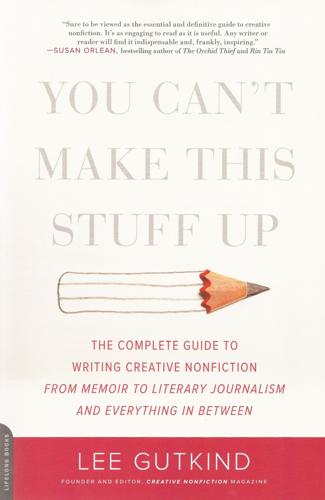
You Can't Make This Stuff Up: The Complete Guide to Writing Creative Nonfiction--From Memoir to Literary Journalism and Everything in Between
by
Lee Gutkind
Published 13 Aug 2012
Also in theaters this year: Morgan Spurlock’s Super Size Me, for which the filmmaker ate only McDonald’s food for a month, gaining 24.5 pounds in the process. 20 05 Oprah’s Book Club selects A Million Little Pieces; James Frey appears on an episode entitled “The Man Who Kept Oprah Awake at Night.” The Oprah edition of the paperback sells more than 2 million copies. - The Year of Magical Thinking, Joan Didion’s exploration of grief and the year following her husband’s unexpected death, wins the National Book Award for nonfiction. - Scandal? The family of Dr. Rodolph H. Turcotte files suit against Augusten Burroughs and his publisher, St. Martin’s, for invasion of privacy and defamation of character based on Burroughs’s depiction of the family in Running with Scissors.
…
While England Sleeps (Leavitt) White, Edmund “Why I Write” (Didion) Wideman, John Edgar Wieseltier, Leon Wilde, Oscar Wilkinson, Alec Wilkomirski, Binjamin Williams, Art Williams, Terry Tempest Winfrey, Oprah Wired.com Wolcott, James Wolfe, Thomas (Tom) Wolff, Tobias Woods, Peggy Woodward, Bob Word choice Word efficiency World Within World (Spender) Wouk, Herman Writers absence of in story anxiety about readers’ responses to work documenting immersion as part of action reading with eye of Writers’ conferences Writing clarity in evaluating through reading focus framing narrative line and the hook outlining passion for process of recreation/reconstruction reflection researching for revision and See also Structure of creative nonfiction The Writing Life (Dillard) Writing schedules Wurtzel, Elizabeth W.W. Norton Yale University Press Yardley, Jonathan The Year of Magical Thinking (Didion) “Yellow Taxi” (Joseph) citing experts in deconstructing frame of historical extensions in Zeitoun (Eggers) Zeotrope (magazine) Copyright © 2012 by Lee Gutkind All rights reserved. No part of this publication may be reproduced, stored in a retrieval system, or transmitted, in any form or by any means, electronic, mechanical, photocopying, recording, or otherwise, without the prior written permission of the publisher.

Track Changes
by
Matthew G. Kirschenbaum
Published 1 May 2016
NINE REVEAL CODES When John Barth needed to find a way to introduce a collection of his short stories in the aftermath of the September 11 attacks, he turned to a word processing metaphor—WYSIWYG, or “Wys” for short—conferring its name on the “brackish tidewater marsh-nymph” who becomes Barth’s interlocutor as he works through his relationship to what would now strike him as eleven “mostly Autumnal and impossibly innocent” pieces of fiction.1 Joan Didion begins The Year of Magical Thinking (2006) by recounting the properties of the Microsoft Word file containing the first words she wrote after her husband’s death from a heart attack as he was sitting across the kitchen table from her. The file’s seemingly inconsequential technical details are proffered by Didion as a kind of touchstone, an objective anchor for her memories even as she asserts her autonomy over a misleading date stamp: “That would have been a case of my opening the file and reflexively pressing save when I closed it.”2 Paul Kafka’s Love [ENTER] (1997) features chapters named for its characters with a date stamp and a time stamp and the suffix .doc appended to each of them, for example “10/23/92 23:06 Bou.Doc.”
…
Deighton, Bomber, 86. 9. Reveal Codes 1. John Barth, The Book of Ten Nights and a Night (New York: Houghton Mifflin, 2004), 4–5. In two of the stories, “Click” (1997) and “The Rest of Your Life” (2000), the characters’ personal computers figure as plot devices. 2. Joan Didion, The Year of Magical Thinking (New York: Vintage, 2006), 3. 3. See Gary Snyder, “Why I Take Good Care of My Macintosh,” IT Times 6, no. 4 (January 1998), http://ittimes.ucdavis.edu/v6n4jan98/snyder.html. The poem originally appeared in Turn-Around Times in March 1988. At that time Snyder worked on a Macintosh Plus, and he has been a loyal Apple user ever since.
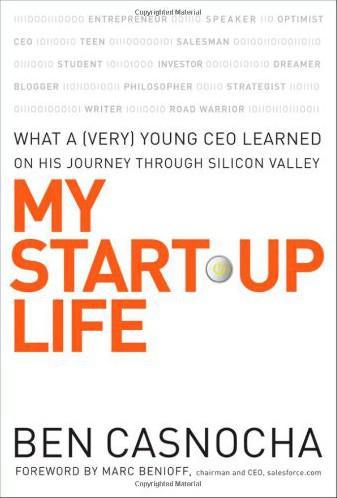
My Start-Up Life: What A
by
Ben Casnocha
and
Marc Benioff
Published 7 May 2007
by William Marling Intellectual Life The Blank Slate, by Steven Pinker The Presentation of Self in Everyday Life, by Erving Goffman Reflections by an Affirmative Action Baby, by Stephen Carter Integrity, by Stephen Carter The Accidental Asian, by Eric Liu Mind Wide Open, by Steven Johnson Socrates Café, by Chris Phillips Self-Renewal, by John Gardner Public Intellectuals, by Richard Posner Psychology Influence: The Psychology of Persuasion, by Robert Cialdini Flow, by Mihaly Csikszentmihalyi Man’s Search for Meaning, by Viktor Frankl Biography/Memoir My Life, by Bill Clinton This Boy’s Life, by Tobias Wolff Swimming Across, by Andy Grove All Over But the Shoutin’, by Rick Bragg Personal History, by Katherine Graham Emerson: Mind on Fire, by Robert Richardson In an Uncertain World, by Robert Rubin The Year of Magical Thinking, by Joan Didion Religion End of Faith, by Sam Harris The Universe in a Single Atom, by the Dalai Lama APPENDIX C The World’s Religions, by Huston Smith The Bhagavad-Gita Plan B: Further Thoughts on Faith, by Anne Lamott Under the Banner of Heaven, by Jon Krakauer Politics/Current Affairs Ghost Wars, by Steve Coll Running the World, by David Rothkopf Founding Brothers, by Joseph Ellis A Conflict of Visions, by Thomas Sowell Going Nucular, by Geoffrey Nunberg America at the Crossroads, by Francis Fukuyama Holidays in Hell, by P.

The Amateurs: A Novel
by
John Niven
Published 1 Jan 2009
It takes in information and orchestrates complex behavioural repertoires that allow human beings to act in sometimes marvelous, sometimes terrible ways. From Neurons to Neighborhoods, Jack P. Shonkoff and Deborah A. Phillips (eds) I know why we try to keep the dead alive: we try to keep them alive in order to keep them with us. The Year of Magical Thinking, Joan Didion 14 NORTH AYRSHIRE GENERAL HOSPITAL, BUILT IN THE early 1980s, is a sprawling structure of white and chocolate that sits less than ten miles to the east of Ardgirvan, just on the outskirts of the larger town of Kilmarnock. NADGE, as the locals call it, was not a place of fond memories for Cathy Irvine.

Skyfaring: A Journey With a Pilot
by
Mark Vanhoenacker
Published 1 Jun 2015
Henry Holt and Company, LLC: Excerpt from “Kitty Hawk” from The Poetry of Robert Frost edited by Edward Connery Lathem, copyright © 1969 by Henry Holt and Company, copyright © 1956, 1962 by Robert Frost. All rights reserved. Reprinted by permission of Henry Holt and Company LLC. Janklow & Nesbit Associates: Excerpt from The Year of Magical Thinking by Joan Didion. Reprinted by permission of Joan Didion c/o Janklow & Nesbit Associates. Mark Whyles Management Ltd: Excerpt from “Salters Road” by Karine Polwart. Reprinted by permission of Karine Polwart c/o Mark Whyles Management Ltd. Penguin Random House: Excerpt from “The Poem of Flight” from New Selected Poems by Philip Levine, copyright © 1991 by Philip Levine; excerpt from Travels With Charley by John Steinbeck (Penguin Books, 1992), copyright © 1961, 1962 by The Curtis Publishing Company Inc., copyright © 1962 by John Steinbeck, copyright renewed 1989, 1990 by Elaine Steinbeck, Thom Steinbeck and John Steinbeck IV.
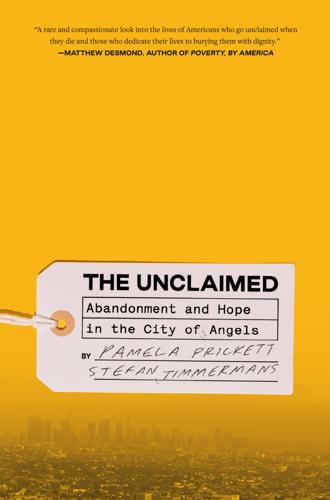
The Unclaimed: Abandonment and Hope in the City of Angels
by
Pamela Prickett
and
Stefan Timmermans
Published 11 Mar 2024
GO TO NOTE REFERENCE IN TEXT A woodworker in Arkansas There are different versions of his story. On the Garden of Innocence website, it was an urn made of hickory harvested in Tennessee. We drew on the sassafras story as told by Elissa at a fundraising event we attended in May 2017. GO TO NOTE REFERENCE IN TEXT “a place none of us knows” Joan Didion, The Year of Magical Thinking (New York: Knopf Doubleday, 2005), 188. GO TO NOTE REFERENCE IN TEXT never fully recovered The notion that grief is something you recover from has been problematized as a medical-psychiatric perspective; Berns, Closure; Darcy Harris, “Political Grief,” Illness, Crisis and Loss 30 (2022): 572–89; and Lauren J.
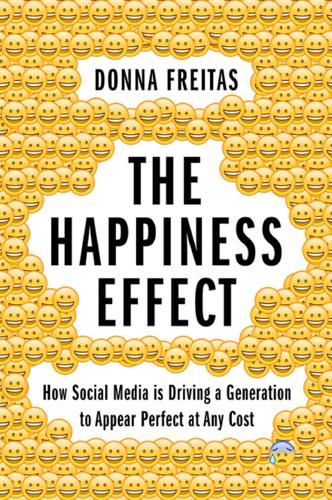
The Happiness Effect: How Social Media Is Driving a Generation to Appear Perfect at Any Cost
by
Donna Freitas
Published 13 Jan 2017
Jason, junior, public university TRYING SO HARD TO FORGET OURSELVES In a seminar on memoir that I taught at Hofstra University’s Honors College, my five intellectually gifted and academically driven students contemplated falling madly in love while reading Patti Smith’s Just Kids, what it’s like to be young and Muslim via Eboo Patel’s Acts of Faith, and the trials of grief in Joan Didion’s Year of Magical Thinking. But there was something about memoir itself, about sitting down to contemplate life’s meaning and purpose, that caused my students to question absolutely everything: their majors, their career paths, their backgrounds, the pursuit of true love. It pulled them up and out of their comfort zones and had them pouring out their deepest feelings.
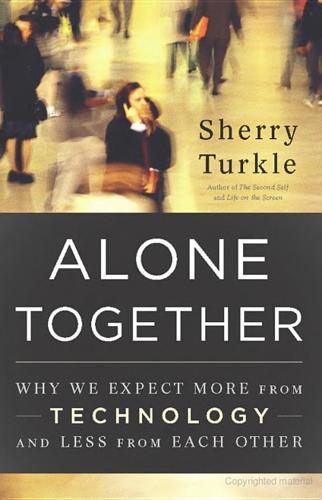
Alone Together
by
Sherry Turkle
Published 11 Jan 2011
Second, online links that are there to be double-clicked are determined by what the author of the text thinks it is important for you to be exposed to. Third, even if one accepts that such links are convenient, they are easily bypassed when reading is interrupted by an incoming e-mail or other online distractions. 3 In The Year of Magical Thinking (New York: Alfred A. Knopf, 2005), a memoir about the year after her husband’s death, Joan Didion describes how material objects became charged with meaning. So, for example, Didion cannot bring herself to throw away her husband’s shoes because she is convinced that he may need them. This same magical thinking is associated both with religious devotion and the “illness” of mourning.
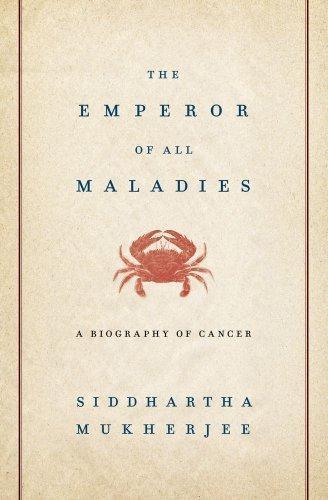
The Emperor of All Maladies: A Biography of Cancer
by
Siddhartha Mukherjee
Published 16 Nov 2010
Jan Lindsten (Singapore: World Scientific Publishing, 1993). 418 “allergic to cancer”: Merrill Goozner, The $800 Million Pill: The Truth Behind the Cost of New Drugs (Berkeley: University of California Press, 2004), 195. 418 Drained and dejected: Ibid. 418 “Nobody gave a shit”: Bazell, Her-2, 49. 419 “When I was finished with all that”: Ibid. Also Barbara Bradfield, interview with author, July 2008. 419 But there was more river to ford: Ibid. 420 “His tone changed,” she recalled: Ibid. 420 “I was at the end of my road”: Ibid 420 “Survivors look back and see omens”: Joan Didion, The Year of Magical Thinking (New York: Vintage, 2006), 152. 420 On a warm August morning in 1992: Bradfield, interview with author. Details of the trial and the treatment are from Bradfield’s interview, from Bazell’s Her-2, and from Slamon, interview with author, April 2010. Drugs, Bodies, and Proof 423 Dying people don’t have time or energy: “Dying for Compassion,” Breast Cancer Action Newsletter 31 (August 1995). 423 It seemed as if we had: Musa Mayer, Breast Cancer Action Newsletter 80 (February/March 2004). 423 “True success happens”: Breast Cancer Action Newsletter 32 (October 1995). 424 The number of women enrolled in these trials: Robert Bazell, Her-2: The Making of Herceptin, a Revolutionary Treatment for Breast Cancer (New York: Random House, 1998), 160–80. 424 “We do not provide . . . compassionate use”: Ibid., 117. 424 “If you start making exceptions”: Ibid., 127. 424 “Why do women dying of breast cancer”: “Dying for Compassion,” Breast Cancer Action Newsletter. 424 “Scientific uncertainty is no excuse”: Charlotte Brody et al., “Rachel’s Daughters, Searching for the Causes of Breast Cancer: A Light-Saraf-Evans Production Community Action & Resource Guide,” http://www.wmm.com/filmCatalog/study/rachelsdaughters.pdf (accessed January 31, 2010). 424 Marti Nelson, for one, certainly could not: Marti Nelson’s case and its aftermath are described in Bazell, Her-2. 427 On Sunday, May 17: Bruce A.